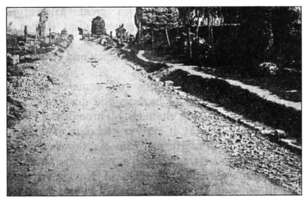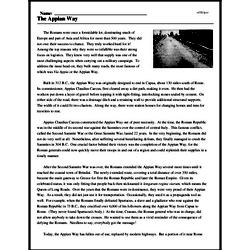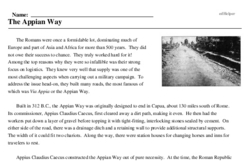The Appian Way
The Romans were once a formidable lot, dominating much of Europe and part of Asia and Africa for more than 500 years. They did not owe their success to chance. They truly worked hard for it! Among the top reasons why they were so infallible was their strong focus on logistics. They knew very well that supply was one of the most challenging aspects when carrying out a military campaign. To address the issue head-on, they built many roads, the most famous of which was Via Appia or the Appian Way.
Built in 312 B.C., the Appian Way was originally designed to end in Capua, about 130 miles south of Rome. Its commissioner, Appius Claudius Caecus, first cleared away a dirt path, making it even. He then had the workers put down a layer of gravel before topping it with tight-fitting, interlocking stones sealed by cement. On either side of the road, there was a drainage ditch and a retaining wall to provide additional structural supports. The width of it could fit two chariots. Along the way, there were station houses for changing horses and inns for travelers to rest.
Appius Claudius Caecus constructed the Appian Way out of pure necessity. At the time, the Roman Republic was in the middle of its second war against the Samnites over the control of central Italy. This famous conflict, called the Second Samnite War or the Great Samnite War, lasted 22 years. In the very beginning, the Romans did not do very well at all. Nonetheless, after suffering several humiliating defeats, they finally managed to crush the Samnites in 304 B.C. One crucial factor behind their victory was the completion of the Appian Way, for the Roman generals could now quickly move their troops in and out of a region and could replenish their supplies in a timely manner.




